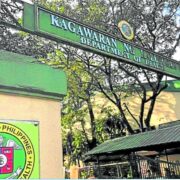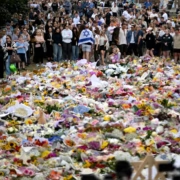Coping better with natural disasters

Typhoons and heavy downpours cause flooding that results in fatalities in many provinces. Those affected lose their homes and livelihoods in an instant. The most recent disaster, Severe Tropical Storm “Kristine,” hit the Bicol region hardest, with residents finding immediate evacuation difficult because of up to 20 feet of floodwaters.
Local authorities were in dire need of rubber boats to rescue those stranded on rooftops, with the National Disaster Risk Reduction and Management Council (NDRRMC) regional outfits hardly coping with the overwhelming calls for help. The lack of equipment didn’t help any.
Our country being disaster-prone, the NDRRMC should be equipped with the capacity to respond adequately to calamities, with their regional branches in close coordination with local government units (LGUs), especially in emergency evacuations. Climate change has made things more difficult, such that our top officials have found it necessary to be at the disaster sites to map out government strategies to cope with the emergency situation.
It is an enormous task to provide the equipment needed, on top of addressing health and food concerns in evacuation centers. We are encouraged by the efforts of the executive machinery, including LGUs, to do what they can. This demonstration of unity warms our heart, with people setting aside their political differences in this time of need.
Malacañang might consider our humble suggestion to enhance this collective effort in facing disasters: LGUs should be equipped to do their part with health and social services already in place, like medical and evacuation facilities, while food and other supplies should be packed and ready for distribution. As natural calamities visit our country regularly, LGUs should have identified or built evacuation centers, with disaster personnel trained to handle emergency response. The national government should consider jumpstarting the devolution to the LGUs of these local services with the corresponding budget needed. Disaster-mapping should be done to identify danger zones, with the maps distributed to LGUs early on, long before the expected calamity.
The national government can also set up a national emergency task force (NETF) to act swiftly on emergencies, to be composed of high-ranking representatives of agencies concerned, like the DSWD, DBM, and DOF (for the logistics); the ERC for power utilities; the DOH for health services, and the DND, PAF, DPWH, etc. for access to areas isolated by floods or landslides, as well as nongovernment units like the Red Cross, for additional assistance.
We have seen improvement in disaster response, with the NDRRMC at the helm. Making sure it is better equipped will help, as will the President’s and the Cabinet-level NETF’s hands-on actions.
Marvel K. Tan, CPA,
captbeloytan@gmail.com

















